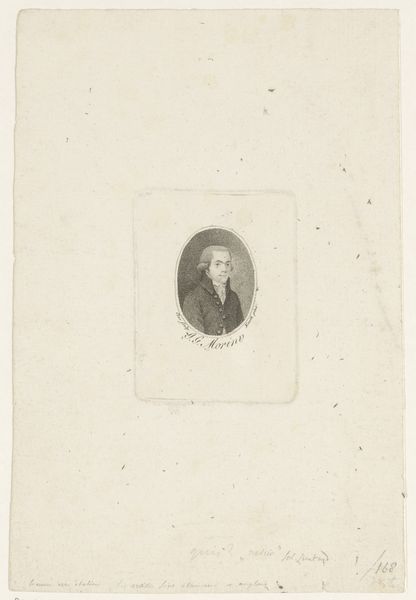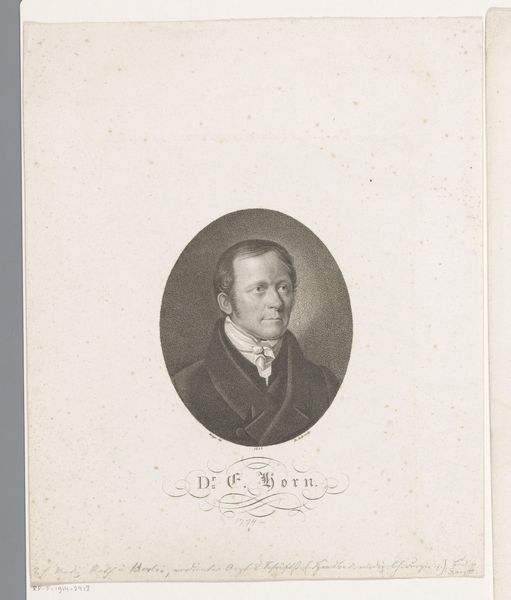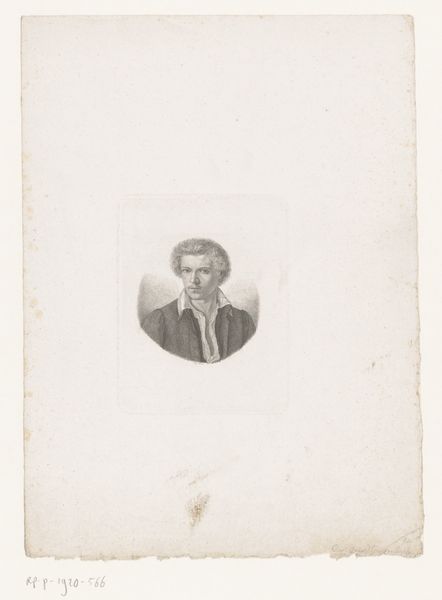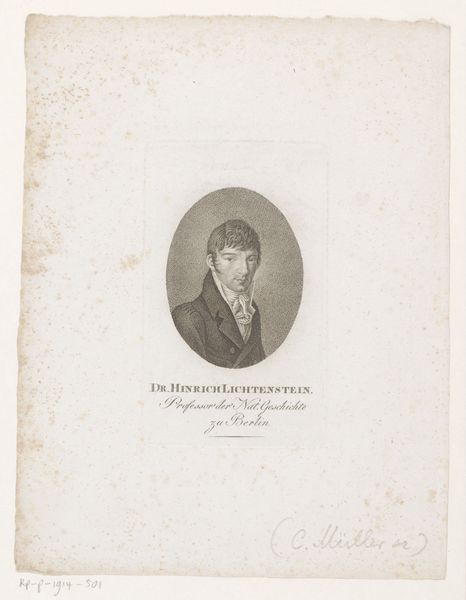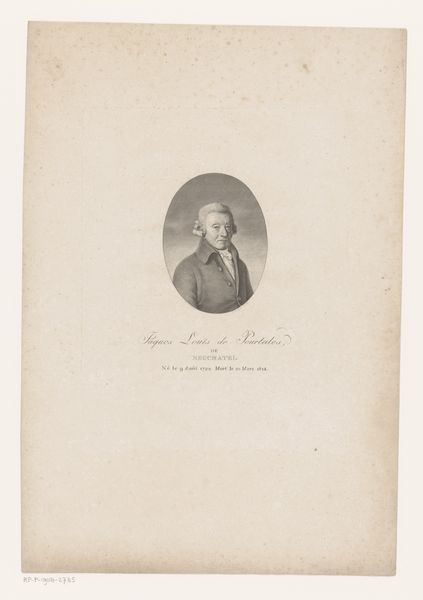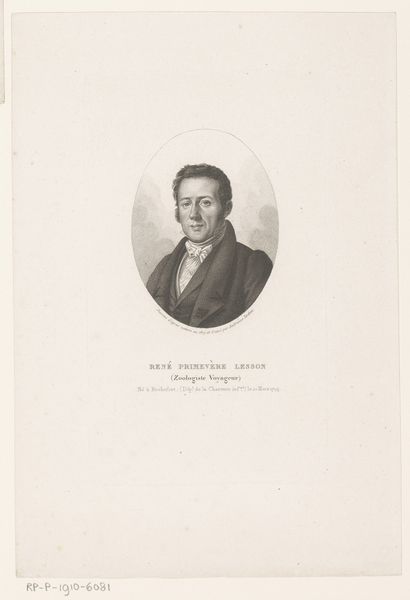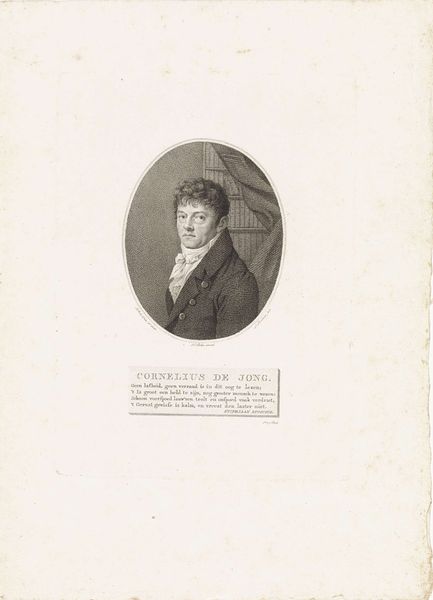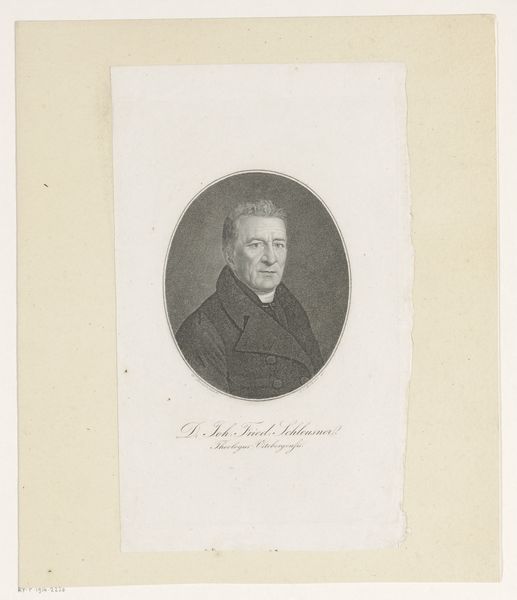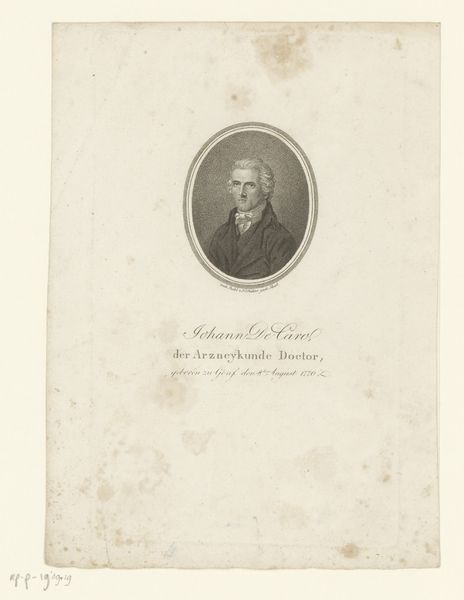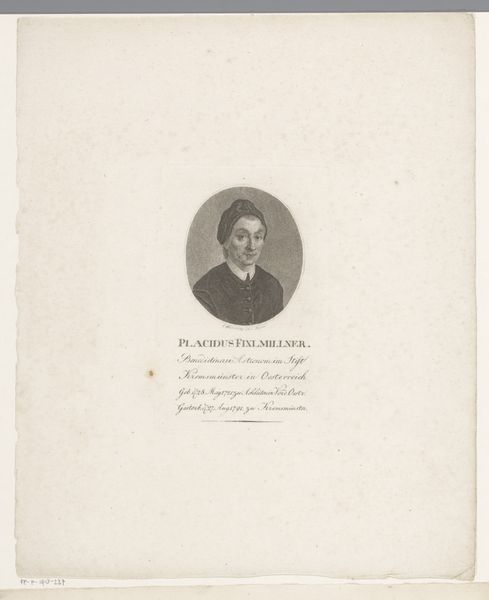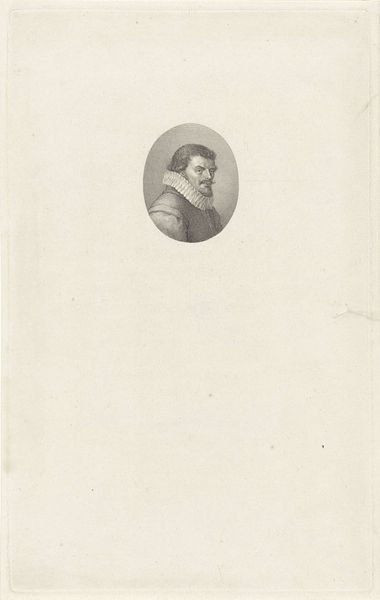
print, paper, engraving
#
portrait
#
pencil drawn
#
light pencil work
#
neoclassicism
#
ink paper printed
# print
#
pencil sketch
#
paper
#
pencil work
#
engraving
Dimensions: height 147 mm, width 97 mm
Copyright: Rijks Museum: Open Domain
Curator: This is a print titled “Portret van Franz Mattausch” held here at the Rijksmuseum, likely created between 1789 and 1825. Editor: Oh, hello there, Franz. First thought: he seems… uncertain. Like he's just remembered he left the stove on. It's all in those furrowed brows. Curator: Well, consider the context. Neoclassical portraiture, even in printed form, was about more than just likeness. It served to solidify social status and often constructed narratives of masculine authority and civic virtue. Note his confident posture and attire. Editor: Mmm, the posture’s more stiff than confident to me, a tad uncomfortable actually. I'll grant you the clothing though - certainly says "I'm someone of means, look at my fancy waistcoat". What strikes me is the intimacy. It’s just his face. Curator: Exactly. The minimalist style directs our focus entirely on the individual. What you interpret as uncertainty, I see as a signifier of the modern self – self-aware, and presented as such for posterity. Think about the Enlightenment's emphasis on reason and the individual. Editor: You think the artist, Friedrich Wilhelm Bollinger, aimed for intimacy by leaving it at just that, a single bust image? Or were they maybe working under budgetary restrictions, needing to cut it off at the sternum? Sometimes the "modern self" is just code for "ran out of paper". Curator: The use of engraving, while appearing simple, allows for widespread distribution. Prints democratized portraiture, making images of notable figures accessible beyond the elite circles. Editor: It’s a world away from an Instagram selfie, I have to say. But, if Franz had Insta, this is definitely the pose he’d go with. Trying, yet failing to be super deep and mysterious! Curator: The intersection of art and society is visible in the materials and artistic decisions and this print reflects the changing landscape of 18th and 19th century European society and portraiture. Editor: Yeah. And now Franz lives on through us having a good giggle at his expense, and maybe thinking about Enlightenment era German selfies. So in a way, he achieved immortality. Bravo, Franz!
Comments
No comments
Be the first to comment and join the conversation on the ultimate creative platform.
